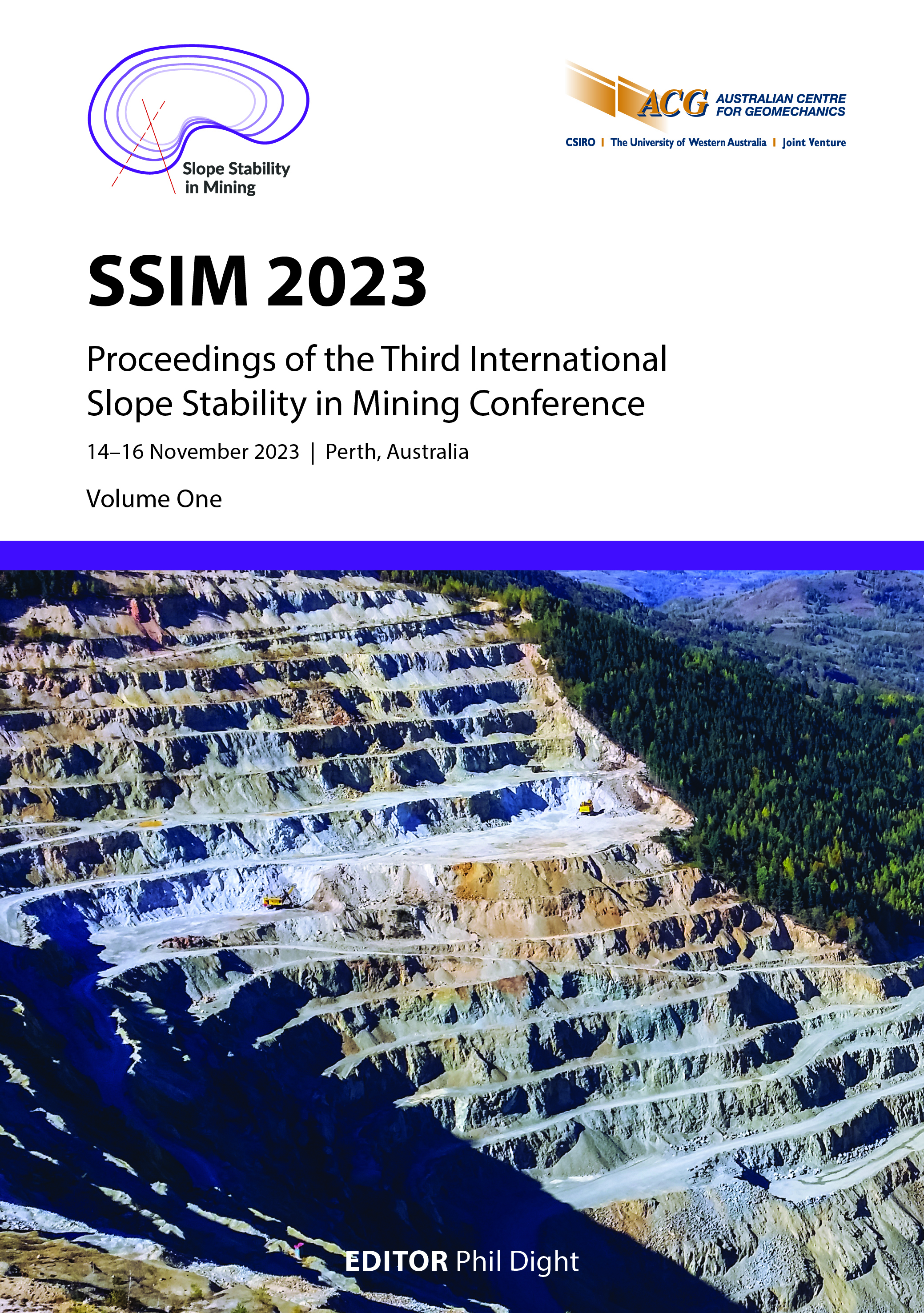Pit slope optimisation through a deep oxide zone at Newmont Boddington gold mine

|
Authors: Powell, C |
DOI https://doi.org/10.36487/ACG_repo/2335_01
Cite As:
Powell, C 2023, 'Pit slope optimisation through a deep oxide zone at Newmont Boddington gold mine', in PM Dight (ed.), SSIM 2023: Third International Slope Stability in Mining Conference, Australian Centre for Geomechanics, Perth, pp. 67-80, https://doi.org/10.36487/ACG_repo/2335_01
Abstract:
This paper comprises a case study of pit slope optimisation design and implementation through a deep oxide horizon sensitive to porewater pressure and adjacent to critical mine infrastructure. Successful completion of the optimised cutback allows additional width of mining within the underlying hard rock orebody, adding approximately 260 koz Au and 30 Mlb Cu to ore reserves. Preliminary ground investigations identified elevated porewater pressure within weak in situ oxide material. Initial slope stability assessments indicated challenges in achieving design. A combination of slope geometry changes, detailed hydrogeological assessments, and proactive slope drainage and buttressing initiatives coupled with monitoring controls during excavation are used to safely achieve an optimised pit shell design. The deep oxide slope is located adjacent to the main conveyor corridor carrying ore from the primary crusher to the processing plant and a section of haul road running along the pit crest. Additional care was therefore required during the planning and implementation stage of the project to ensure there was no impact to mine operations. Slope geometry changes include local batter/berm reconfiguration and an overall composite angle slope profile to take advantage of available strength in upper unsaturated oxides while removing weight at the top of the slope. Drainage measures included progressively boxing out in situ oxide material in 20 m-wide panel segments below design berms and replacing them with free-draining hard rock mine waste. Buttressing comprised of mine waste rockfill to help stabilise oxide batter faces and add additional weight in the lower half of the slope. Monitoring mainly relied on prisms and vibrating wire piezometer arrays installed along the critical design section used to assess slope stability. Hold points were used during excavation/construction to assess stability using updated pore pressure data. The implementation stage was therefore able to take advantage of predicted/realised pore pressure reductions to inform subsequent deeper excavation as mining progressed.
Keywords: slope stability, optimisation, cutback, assessment, pore pressure, VWP, oxide
References:
Absolute Geotechnics 2019, S05B Cutback Oxide Slope Stability and Conveyor Corridor Interaction Study, technical report for Newmont.
Durham Geo Slope Indicator 2013, VW Piezometer, Slope Indicator, Mukilteo.
Fluid Potential 2021, Hydraulic Test Analysis – S05B Oxide Bowl, technical report for Newmont.
Powderham, A & O’Brien, A 2020, The Observational Method in Civil Engineering, CRC Press, London.
Red Creek Water Solutions 2018, Groundwater Conditions at the Proposed S05B Cutback, technical report for Newmont.
Skempton, AW 1953, ‘The colloidal activity of clays’, Proceedings of the Third International Conference on Soil Mechanics and Foundation Engineering, ICOSOMEF, Zurich, pp. 57–61.
© Copyright 2025, Australian Centre for Geomechanics (ACG), The University of Western Australia. All rights reserved.
View copyright/legal information
Please direct any queries or error reports to repository-acg@uwa.edu.au
View copyright/legal information
Please direct any queries or error reports to repository-acg@uwa.edu.au

